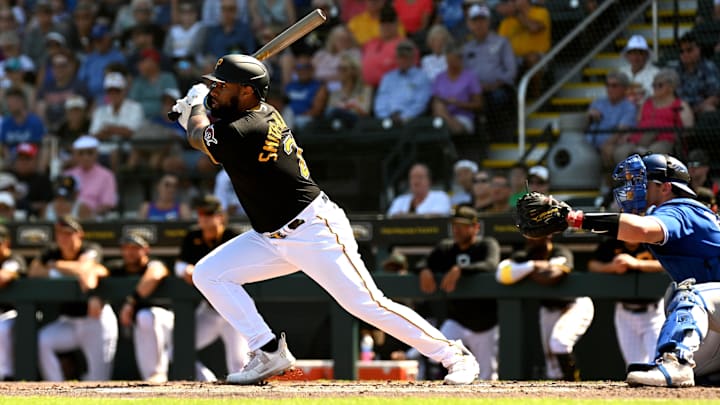Canaan Smith-Njigba may have some of the rawest power in the Pirate system, but is he starting to tap into that strength and translate that into in-game results?
One of the Pittsburgh Pirates’ outfield prospects is Canaan Smith-Njigba. Acquired in the Jameson Taillon trade, Smith-Njgiba’s strengths and weaknesses have always been on full display. Over the last three years, he’s posted a walk rate greater than 14% while showing off 60-grade raw power. But in that same amount of time, he has a ground ball rate of 50.9%, the seventh highest among minor league hitters across the last three seasons with at least 1000 plate appearances.
Despite having well above average, and arguably borderline elite raw power, he’s posted a slugging percentage of .430 and ISO of .142 (.288 batting average subtracted from his slugging percentage). He had a 93.3 MPH exit velocity in his brief major league showing on five batted balls. He’s a stocky but strong-built 6’0”, 230 pounds, but the in-game power simply hasn’t been there.
But Smith-Njigba has been nothing short of outstanding in spring training. Through his first 39 plate appearances, Smith-Njigba has collected 11 hits, including two home runs. That’s a pace of 31 home runs over the course of 600 plate appearances. He’s also maintained an exit velocity over 90 MPH. But is this a small sample size causation, or has Smith-Njigba started to tap into that raw power?
If the Statcast data tells anything, it’s that Smith-Njigba has started to lift the ball a little more. He has an average launch angle of 17.1 degrees in the balls he has made contact with (including foul balls). His average launch angle of batted balls put into play is 10.6 degrees, which is significantly lower than on all the baseballs he has made contact with. That’s slightly below average, but again, a small sample size of just 21 batted balls.
But there were plenty of productive players in 2022 with a launch angle of around 10 degrees and exit velocity of 91 MPH or greater. Rookie Of The Year winner Julio Rodriguez had a 10.1-degree launch angle and 92 MPH exit velocity, leading to an expected batting average and a slugging percentage of .254 and .460, respectively. Juan Soto had an xBA and xSLG of .260 and .501 with a 9.1-degree launch angle and 91 MPH exit velocity. Lars Nootbaar had a .346 xwOBA with a 10.7-degree launch angle and 91.7 MPH exit velocity.
If Smith-Njigba really wants to tap into his huge raw power, he needs a launch angle of 12 degrees or higher. But at the very least, it looks like he’s started to improve, based on the small spring sample size. Based on launch angle, exit velocity, and plate discipline alone, he could be a .250/.350/.450 batter with 20 home runs, which is about what would be expected of batters with similar exit velocity and launch angle. I could see him even getting to a .500 slugging percentage if he lifts the ball even more.
